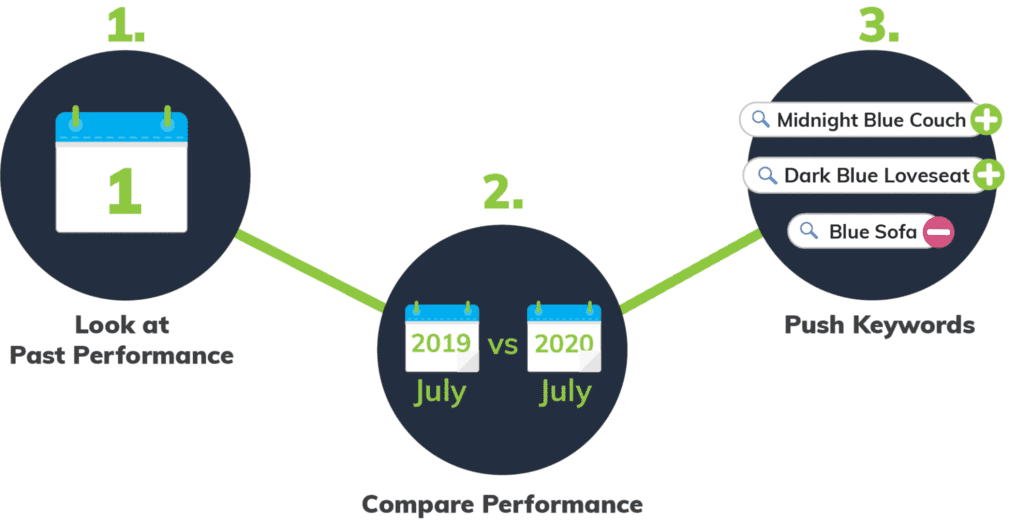Have you ever noticed that some of your top products have stopped selling? Or, have you ever wondered why revenue is down this year as your hottest products are coming into season? If your answer is yes, you should consider running a gap analysis for your marketing campaigns.
The purpose of a gap analysis for marketing campaigns is to identify differences in the performance of your top products and keywords over time. As a result, you ensure coverage on all your best products and keywords when you need them the most.

Why Should You Perform a Gap Analysis?

1. Your business is highly seasonal.
If your business experiences seasonality, it is likely that you sell different products at different times of year. Pushing the right summer products from late spring to late summer, pushing winter products from late fall to late winter, and so on. Running gap analysis for your marketing campaigns can help you identify which products are most likely to perform well during seasonal shifts, and subsequently confirm that your seasonal products are receiving adequate traffic as they come into season.
Read about how we tackled extreme seasonality for a custom apparel and gift retailer in this case study.
2. You notice a sudden drop off in sales.
Gap analyses can be great for identifying “gaps” in your advertising account. These “gaps” represent previously top selling products/keywords that are no longer generating revenue at the rate you normally expect, thereby contributing to a drop off in sales. “Gaps” can result from cutting back bids too far, restructuring your advertising account, products shifting between product groups, and so on. By identifying these top performing products/keywords resulting in “gaps”, you can make the necessary adjustments to get them back in front of customers.
3. Regular account maintenance.
Think of it as an insurance policy for your advertising account. It’s important to consistently sweep through your campaigns to make sure all top performing products & keywords are getting adequate traffic. That’s how you maintain an uninterrupted stream of sales and revenue!

How Do I Perform a Gap Analysis for My Marketing Campaigns?

Step 1) Look at past performance.
Pull the product/keyword level historical performance data. You can use the last 30-90 days, the prior year’s data (for example: July 2019 v July 2020), or something completely different. After obtaining the dataset, identify the top performers from the time period in question.
Step 2) Compare past to current performance.
The next step in the process is to pull product/keyword level data from a recent time period. Once you have the data, compare the current performance to the past performance of the products/keywords you identified in step 1. This is how you identify any “gaps” in product/keyword performance!
Step 3) Push top performers.
If any of your top products/keywords from step 1 are underperforming compared to the past, make sure you are pushing those segments or ad groups. These are opportunities to increase sales and revenue, so it is important to target them aggressively. It is also important to routinely revisit these segments over time to ensure that they are getting the traffic you expect from a top performing product/keyword.
And that’s it!
Running a gap analysis for digital marketing campaigns can turn around the performance of an account in a short period of time. If you need help running a Gap Analysis for your marketing campaigns, don’t hesitate to reach out and speak to an Omnitail analyst today!







